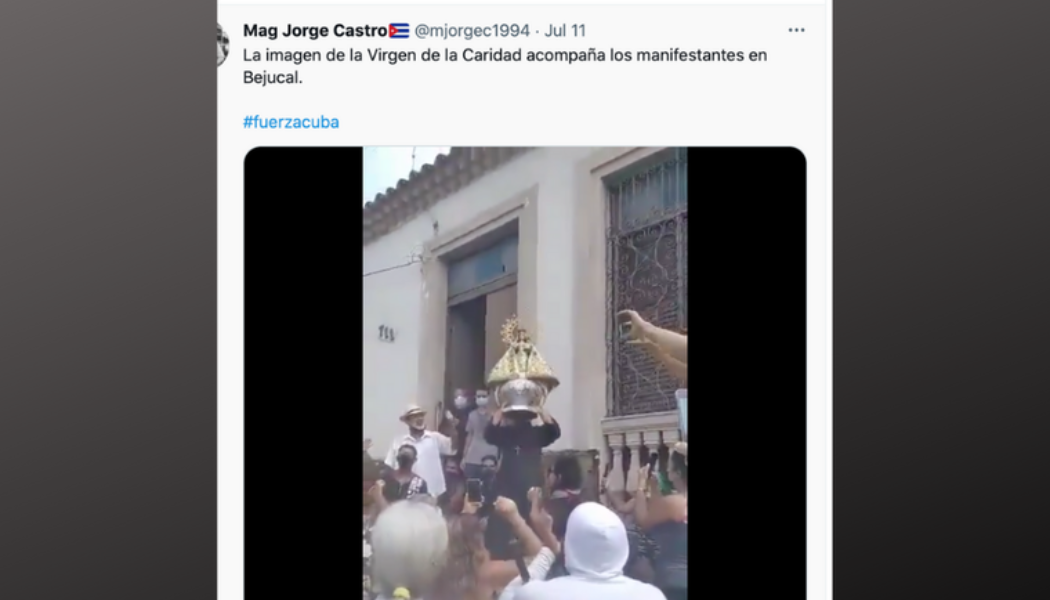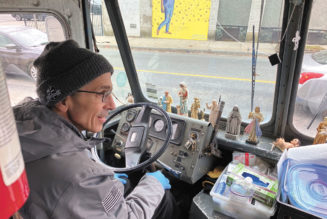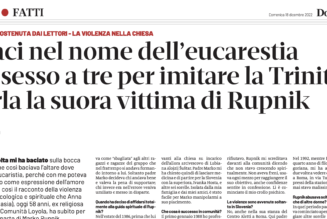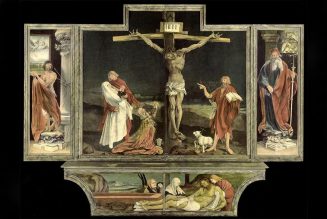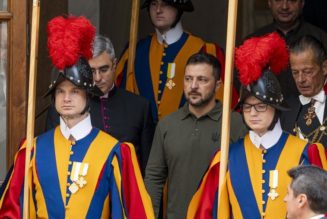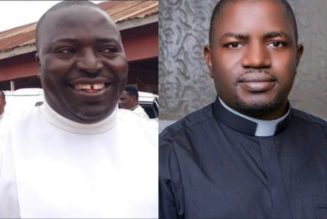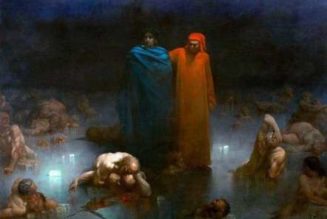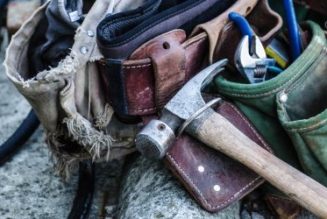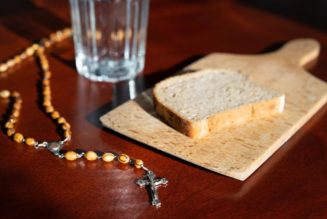
Throughout their country’s history, the people of Cuba have called upon Our Lady of Charity’s intercession to bring calm amid life’s stormy seas. From aiding the “mambisa” freedom fighters in the island nation’s war for independence from Spain, to facilitating an untold number of everyday miracles for ordinary Cubanos, many believe “La Cachita” has helped answer prayers time and time again.
Now, in the midst of mass public demonstrations the likes of which have rarely if ever been seen in 60 years of communist rule, the Cuban people are turning to “La Virgen de la Caridad” once more, as they take to the streets by the thousands to call not only for immediate relief from an economic and medical crisis, but also sweeping governmental reform.
Images of the Virgin have mingled with cries of “liberta!” and “patria y vida,” the latter meaning “homeland and life,” a clever counter to the longstanding communist slogan of “patria o muerte” (“homeland or death”).
The contrast between life and death is intentional, as demonstrators criticize the communist government for being more concerned with ideological purity than the wellbeing of its people.
Compounding an economic downturn spurred by U.S. sanctions, the Cuban regime has consistently rejected humanitarian aid meant for its people. The government also reportedly turned down donations of Pfizer COVID-19 vaccine from international bodies, preferring to develop its own and wasting precious time in the process.
Calls for Change
As a result, the Cuban people have been beset by a multitude of harrowing challenges. The country’s economy shrunk 11% in 2020, inducing shortages of food, medicine, and fuel, and its COVID-19 vaccination rate has lagged, contributing to a surge in new cases and fatalities.
“Asking for help isn’t a crime, denying it is,” read a message shared on social media by Cubans both on and off the island throughout the crisis.
But while the desperate economic and medical conditions have served as the catalyst for the demonstrations, which erupted spontaneously in a suburb of capital-city Havana on July 11, before spreading to dozens of cities across the island, the chants coming from the streets reveal an awakened desire for human needs beyond food and health. Protesters are not only calling for the resignation of President Miguel Díaz-Canel, but also an end to the communist regime that has governed Cuba since the bloody, Fidel Castro-led revolution of 1959.
Dr. Ramon Dominguez, a leader among the Cuban exile community in the United States, says his fellow Cubans have suffered too long from a lack of liberty: “no liberty of expression, no liberty of religion, no liberty of nothing.”
“They’ve had enough, and when you’ve had enough, that’s when you lose your fear,” Dominguez, president of Cuban Municipalties in Exile (Municipios de Cuba en el Exilio) and national coordinator of the Miami Medical Team, told the Register regarding protesters’ willingness to defy the authoritarian government and call for change.
Violence and Reprisals
Reprisals have been swift. First, the government cut off internet access on the Island, limiting both the ability of dissidents to communicate with each other and to share updates with the wider world. Violence followed, after President Díaz-Canel used a nationally televised speech on Monday to urge his supporters to confront anti-government protesters.
“The order to fight has been given — into the street, revolutionaries!” the BBC reports Díaz-Canel saying.
At least one person has been killed during the protests, with an unknown number suffering significant injuries at the hands of government security forces, including a Catholic priest.
Additionally, the Movmiento San Isidro, a Cuban dissident group, has counted 171 reports of dissidents being detained so far.
Dominguez believes that the popular push for regime change “can’t be stopped,” but worries that the communist government will resort to greater violence as it runs out of options. He and others have called for the U.S. to push for a peaceful intervention coordinated by the Organization of American States to ensure that protestors can assemble and express themselves without fear of reprisal. Demonstrations calling for U.S. intervention have also taken place in the Cuban exile stronghold of Miami, though the approach has its critics, who warn it would support the communist regime’s favored narrative of an imperialistic United States intent on occupying Cuba.
For his part, President Joe Biden issued a public statement on Monday, saying that the “Cuban people are demanding their freedom from an authoritarian regime” and calling on the Cuban government “to refrain from violence in their attempt to silence the voices of the people of Cuba.” The president also said that the U.S. stands with the Cuban people, but it remains to be seen what steps he’ll be willing to take to protect the human rights of Cubans and shield them from violence.
A Pivotal Opportunity
Carlos Paya is no stranger to violence at the hands of the communist regime. As a young man, he was forced to flee Cuba in 1986, taking up residence in Spain. The next year, his brother, Oswaldo, began the Christian Liberation Movement (MCL), a group inspired by the social doctrine of the Church and committed to nonviolent civil disobedience. Their efforts to reform the Cuban constitution by petition, named the Verala Project after a Catholic priest who had participated in the Cuban struggle for independence, were blocked by the government and resulted in the Black Spring of 2003, which saw 75 dissidents jailed by the regime. Nine years later, Paya’s brother died in a car accident under suspicious circumstances, with a passenger in the car claiming it was run off the road by Cuban government officials. A petition urging the United Nations to investigate Oswaldo’s death has nearly 16,000 signatures.
Today, Paya is MCL’s representative in Spain. He told the Register his organization supports “people protesting on the street peacefully.” Among the changes called for by MCL include freedom of travel by Cubans both on and off the island, the guarantee of freedom of expression an assembly, recognition of economic rights, and free and fair elections.
Paya recognizes this current moment in Cuba as a pivotal opportunity to push for human freedom constituent with the Gospel and Christian teaching. But he says the Catholic Church in Cuba needs to be bold if the opportunity is to come to fruition.
He offered mild criticism of a July 13 statement released by the Catholic bishops of Cuba, saying it didn’t go far enough in condemning the government’s calls and steps toward violence, didn’t sufficiently emphasize demonstrators calls for liberty and political change, and drew a false equivalency between the two sides.
“The Church has to be a lighthouse where people could look,” said Paya, pointing to the role the Catholic Church played in bringing communism to an end in Poland in the 1980s. He acknowledges that similar mass demonstrations in Venezuela in 2019 failed to lead to lasting change, and worries that something similar could happen in Cuba if the Church isn’t willing to “take a step forward.”
“It would be such a pity to lose this opportunity and to lose the lives of those protesting and being detained [if no change results],” he said.
Our Lady of Charity
Paya does see a guiding light in the form of La Virgen de la Caridad — both in terms of her intercession, but also her inspiration.
Typically associated with the phrase, “The Virgin of Charity unites us,” devotion to the image of the Blessed Mother is widespread in Cuba, cutting across economic, racial, political, and even religious lines. In fact, Miami Auxiliary Bishop Felipe de Jesús Estévez once remarked that “La Virgen de la Caridad is the most profound symbol of the Cuban nation. The British have their queen, the Cubans have la Caridad.”
Paya says the image of the Blessed Mother is a reminder that all Cubans are children of the same God and share a spiritual mother, an essential point of commonality as Cuba attempts to pursue a path of national reconciliation.
Paya also says the Virgin can also point Cubans toward a truer sense of freedom.
“I am a son of God, and I am free because God made us free,” he said. “No one else can take our freedom.”
Bishop Estevez made a similar point in his aforementioned remarks.
‘The lie of the Cuban revolution is its political imposition of totalitarianism,” he said. “[Our Lady of Charity’s] persistence in the soul of the both exiled and islanders is an amazing affirmation that politics cannot become total, for the people have spiritual and cultural values that surpass it.”
It’s no surprise, then, that in a moment of la patria’s great need, four Cuban-American U.S. bishops ended their statement of support for the Cuban protestors with an affirmation of their trust in “the motherly gaze of the patroness of Cuba, Our Lady of Charity.” Or that a special novena of prayer for Cuba began on Tuesday, July 13 with a Mass celebrated by Miami Archbishop Thomas Wenski at the National Shrine of Our Lady of Charity in southeast Florida.
“The people of Cuba have always been very religious,” in spite of years of atheistic government crackdowns, said Dominguez. “Their faith can’t be taken away from them. Our beacon of light is God and the Virgin of Charity.”
Join Our Telegram Group : Salvation & Prosperity
